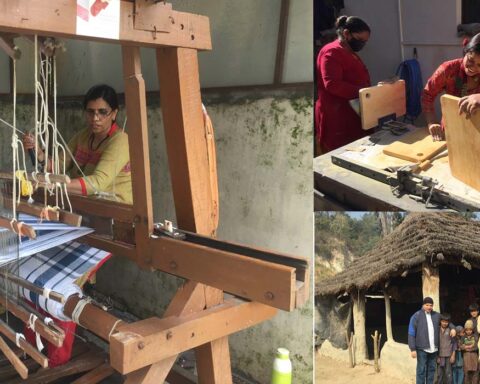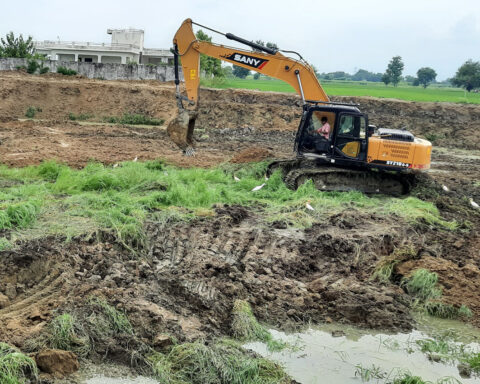It is the age of transformation and enormous social change across Rajasthan. Educational institutions are being established, community groups are getting active to preserve the environment and working towards empowering women and children. In more ways than one, it’s the age of Rajasthani Renaissance. In Udaipur, Maharana Shanbhu Singh decides to set up a school exclusively for girls.
If one thought that this was the Rajasthan of the 21st century, it would be an error of judgement. It’s in fact a news flash from the past, going back to the 1860s and 1870s, more than 160 years ago. In the 19th century, with the Princely States of Rajasthan were in the throes of social development, a new, but a lesser-known, chapter of India’s history opened up for the globalised socially sensitive citizens from the world of Rajputana, as it was then known.
Mewar, Marwar, Bundi, Bikaner, Jaipur, Banswara, Pratapgarh-Deoliya, Bharatpur, Dungarpur, Karauli, Jaisalmer, Tonk – what may seem today to be listing of cities and regions— were actually the Princely States of Rajputana, which governed the region for centuries, long before Pax Britannica was established in 1858 through a proclamation and Queen Victoria, the Sovereign of Great Britain became the Empress of India (Kaiser-e-Hind), even though she never visited the Indian sub-continent in her lifetime.
Though the 19th century subjugation by the British Empire continued unabated, and in different forms under rule of the Crown of England, it is the process of modernisation and westernisation which began in that era and continues to impact lives till date. Modern roads and railways, legal and judiciary courts, hospitals and medical dispensaries, post and telegraph offices, and schools were established. In 1870, at the Durbar held in Ajmer the Governor General Lord Mayo said, “everywhere throughout the length and breadth of Rajputana, justice and order should prevail, and you should make roads and undertake the construction works of irrigation and encourage education…”
Long before the Governor General made these important remarks at the Ajmer Durbar—which incidentally was one of the several Durbars held by Viceroys and Governor Generals—in the Princely State of Udaipur-Mewar under the custodianship of Maharana Shambhu Singh, the first school was established in 1864 near the City Palace.
What is laudable is the school was exclusively for girl students: H.H. The Maharana Girls High School opened its doors, located as it was in Jagdish Chowk, quite the heart of the city of Udaipur ensuring enrolment of the maximum number of girl-students.
“What transpired in 1864 with the setting up of the H.H. The Maharana Girls High School is nothing short of being revolutionary by any yardstick,” says Dr. Lakshyaraj Singh Mewar, scion of the royal family and trustee of the Maharana of Mewar Charitable Foundation (MMCF), Udaipur. Not only did Maharana Shambhu Singh establish the school for girls, he ensured its continuity. It should also be remembered that the Maharana was not formally educated himself, yet he gave paramount importance to formal education, and promoting opportunities for girl students to benefit from education. “I must add that over these 160 years, education and promotion, establishment of educational institutions have been a priority for my illustrious forefathers, the Maharanas of Mewar,” he says.
From the 1880s to 1940s several high schools, universities and institutes were set up during the reigns of Maharana Fateh Singh and Maharana Bhupal Singh. Major contribution was made by Maharana Fateh Singh towards the establishment of the Banaras Hindu University, adding substantially to the fund-raising efforts of Madan Mohan Malaviya. Similarly, grants to Mayo College, Ajmer, and other prestigious centres of education were routinely made as part of their commitment to enhance these avenues for social development.
Fast Forward
Since 2014, the H.H. The Maharana Girls High School, now known as the Government Girls’ Senior Secondary School (GGSSS), has been administered by the District Education Officer (Secondary), Udaipur, under the Directorate of Education of the Rajasthan government. By then the strength had risen to more than 500 students. With the passage of years, the main building of the school needed major repairs and restoration. When the school authorities approached Arvind Singh Mewar of Udaipur, chairman and managing trustee of MMCF, and the 76th Custodian of the House of Mewar, to repair and restore the main building, the Board of Trustees of MMCF pulled out all stops to support the project.
The GGSSS, though it had gained prominence in the region over the years, had made insufficient investment made towards repairs and maintenance of the school infrastructure. Consequently, the GGSSS building was in a dilapidated state. Moreover, the District Education Officer, the authority responsible for the school expressed her inability to get any funds released from the Government for the GGSSS.

For MMCF, the historic relationship between the GGSSS and the House of Mewar was sacrosanct. “We also had vast experience to undertake restoration projects in such buildings, with the in-house availability of numerous consultants, a large pool of master craftsmen and traditional skilled workmen,” says Dr. Mayank Gupta, CEO of the foundation. MMCF was fully committed towards the restoration of GGSSS, without charging any fee for any work undertaken. It was expected that an acknowledgment for its contribution in executing this project be placed on record and displayed on the premises.
On 17 July 2014, the restoration project commenced with Nivritti Kumari Mewar of Udaipur doing the honours of putting the first paste of lime on the wall. It was planned that the eastern and western façade of the school building would be restored in Phase 1. When it was time for the 150th anniversary celebrations on 28 January 2015, the GGSSS school had been given a new lease of life. MMCF spent ₹33 lakhs on the project through its internal funding.

The restoration story did not end with 2015, says Dr Mayank Gupta. “MMCF undertook the second phase of restoration and renovation which included a big hall, four classrooms and two laboratories on the first floor of the school building. The project cost was ₹30 lakh and we titled the project as ‘Education in Udaipur’ initiated by MMCF.”
In the third phase, extensive repairs and renovation of ground floor consisting of six classrooms, toilets of the school building and entrance ramps was completed by July 2016. The ongoing restoration process is being carried out by experienced conservation professionals and traditional craftsmen.
Government awards
The prestigious 21st Bhamashah State Level Award in 2015 was bestowed to the MMCF by the Department of Education, Government of Rajasthan for the development of Government Girls’ Senior Secondary School. This award is given out to individuals, corporate and organisations who have spent more than ₹10 lakh in a financial year for the betterment and development of Government Schools in Rajasthan. In 2017, at

the 23rdBhamashah Samman, MMCF was honoured once again by the chief minister Vasundhara Raje and state officials.
In June 2023 further demonstrating its commitment to the school’s betterment, MMCF undertook a painting project infusing the school premises with a vibrant new look. This comprehensive renovation has transformed the school, creating a modern and inspiring learning environment. The renovation work at GGSSS is a beacon of MMCF’s dedication to preserving the school’s heritage, said Dr Gupta.
On 2 November 2023, Dr. Lakshyaraj Singh Mewar sponsored the complete tuition fees for all the girls at GGSSS for the academic year 2023-2024. “We must make concerted efforts to strengthen girls’ education and ensure universal access. Many girls yearn to learn, yet domestic or financial constraints force them to abandon their studies. I see my contribution as simply upholding the time-honored Mewar tradition of promoting knowledge,” he said, with the humility that comes with compassion and conviction in one’s legacies.



























